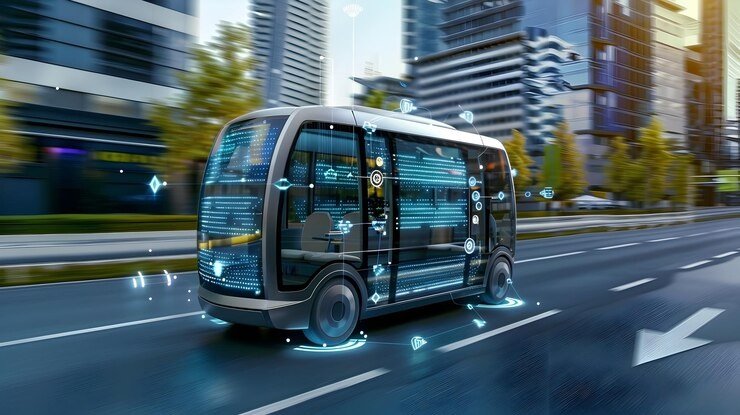The emergence of autonomous vehicles (AVs) represents a seismic shift in urban transportation. As self-driving technology advances, it promises to revolutionize the way people and goods move through cities. From reducing traffic congestion to enhancing safety, autonomous vehicles have the potential to reshape urban landscapes in profound ways. This article explores the various dimensions of how AVs will change urban transportation, including the technological, social, economic, and environmental impacts.
1. The Technological Backbone of Autonomous Vehicles
Autonomous vehicles rely on a combination of advanced technologies, including artificial intelligence (AI), machine learning, sensors, and mapping systems. These technologies enable AVs to navigate complex urban environments without human intervention. Key components include:
- LiDAR and Cameras: These sensors allow AVs to detect objects, pedestrians, and other vehicles, creating a real-time 3D map of their surroundings.
- Machine Learning Algorithms: AVs use AI to analyze data from sensors, predict the behavior of other road users, and make driving decisions.
- Vehicle-to-Everything (V2X) Communication: This technology enables AVs to communicate with other vehicles, traffic signals, and infrastructure to optimize traffic flow and avoid collisions.
These technologies are rapidly evolving, with companies like Tesla, Waymo, and Uber leading the charge in developing fully autonomous vehicles. As these systems become more sophisticated, the transition to autonomous urban transportation will accelerate.
2. Reducing Traffic Congestion and Improving Efficiency
One of the most significant impacts of autonomous vehicles on urban transportation is the potential to reduce traffic congestion. In many cities, traffic jams are a daily frustration, leading to lost productivity and increased pollution. AVs can alleviate these issues in several ways:
- Optimized Traffic Flow: AVs can communicate with each other and with traffic management systems to optimize routes, reduce stop-and-go traffic, and prevent bottlenecks.
- Platooning: Autonomous vehicles can travel in closely spaced groups, or platoons, reducing aerodynamic drag and improving fuel efficiency. This also allows for more efficient use of road space.
- Reduced Need for Parking: With AVs, the need for parking in urban areas could decrease significantly. Autonomous vehicles can drop passengers off at their destination and then park themselves in less congested areas or continue to provide rides, reducing the demand for parking spaces.
By improving traffic flow and reducing the need for parking, AVs can make urban transportation more efficient and reduce the time spent in traffic.
3. Enhancing Road Safety
Safety is a paramount concern in urban transportation, and autonomous vehicles have the potential to dramatically reduce accidents caused by human error. Human factors, such as distraction, fatigue, and impaired driving, contribute to the majority of road accidents. AVs eliminate these risks by:
- Constant Vigilance: Unlike human drivers, autonomous vehicles are always alert, with sensors continuously monitoring the environment.
- Predictive Analytics: AVs can use data from their surroundings to anticipate potential hazards and take preventive actions, such as adjusting speed or changing lanes.
- Reduced Speeding and Aggressive Driving: Autonomous vehicles follow traffic laws precisely, avoiding behaviors that lead to accidents, such as speeding and aggressive driving.
As AV technology improves, the number of traffic accidents could decline significantly, leading to safer urban environments.
4. Transforming Urban Planning and Infrastructure
The widespread adoption of autonomous vehicles will have profound implications for urban planning and infrastructure. Cities will need to adapt to the new realities of AVs, which could lead to:
- Redesigning Streets: With the reduced need for parking and more efficient use of road space, cities may redesign streets to prioritize pedestrians, cyclists, and public spaces. This could lead to the creation of more walkable, livable urban areas.
- New Mobility Hubs: As AVs become more prevalent, cities may develop mobility hubs where passengers can transfer between different modes of transportation, such as AVs, public transit, and bike-sharing services.
- Changes in Public Transit: Autonomous vehicles could complement or even replace certain forms of public transit, especially in areas where traditional services are inefficient or underutilized. AVs could provide first-mile/last-mile solutions, connecting passengers to transit hubs.
Urban planners will need to rethink the design of cities to accommodate the changes brought about by autonomous vehicles, focusing on creating more sustainable and human-centered urban spaces.
5. Economic Impacts and New Business Models
The rise of autonomous vehicles will also have significant economic implications. Several industries will be affected, and new business models will emerge:
- Impact on the Automotive Industry: The shift to autonomous vehicles will disrupt the traditional automotive industry, with implications for car manufacturers, suppliers, and dealerships. As AVs become more common, there may be a decline in private car ownership, with more people opting for shared mobility services.
- New Mobility Services: Companies like Uber and Lyft are already exploring autonomous ride-sharing services, which could become a dominant mode of transportation in urban areas. These services could reduce the cost of transportation and provide more flexible options for city dwellers.
- Job Displacement: While AVs could create new jobs in technology and mobility services, they may also lead to job displacement in industries such as trucking, taxi driving, and delivery services. Policymakers will need to address the potential social impacts of this transition.
The economic landscape of urban transportation will shift as autonomous vehicles become more widespread, with both opportunities and challenges for businesses and workers.
6. Environmental Benefits
Autonomous vehicles have the potential to contribute to more sustainable urban transportation systems. The environmental benefits of AVs include:
- Reduced Emissions: Autonomous vehicles are likely to be electric, which would reduce greenhouse gas emissions and air pollution in cities. Additionally, the optimized driving patterns of AVs can lead to lower energy consumption.
- Less Urban Sprawl: With more efficient transportation options, cities may experience less urban sprawl, as people are more willing to live in denser urban areas with better mobility services.
- Reclaimed Urban Space: The reduction in the need for parking and the potential for narrower streets could free up space for green areas, parks, and other public amenities, improving the overall quality of life in cities.
By reducing emissions and reclaiming urban space, AVs can contribute to the creation of greener, more sustainable cities.
7. Challenges and Considerations
While the potential benefits of autonomous vehicles are significant, there are also challenges that need to be addressed:
- Regulation and Policy: Governments will need to develop new regulations and policies to govern the use of autonomous vehicles, including safety standards, data privacy, and liability issues.
- Cybersecurity: AVs rely on complex software and communication systems, making them vulnerable to cyberattacks. Ensuring the security of these systems will be critical to preventing disruptions and maintaining public trust.
- Equity and Accessibility: It is important to ensure that the benefits of autonomous vehicles are accessible to all members of society, including low-income communities and people with disabilities.
Addressing these challenges will be essential to realizing the full potential of autonomous vehicles in urban transportation.
8. The Road Ahead
The transition to autonomous vehicles in urban transportation is not without its hurdles, but the potential benefits are substantial. As technology continues to advance, cities around the world will need to prepare for the arrival of AVs by rethinking urban planning, infrastructure, and policies. The shift to autonomous vehicles offers a unique opportunity to create more efficient, safer, and sustainable urban transportation systems that enhance the quality of life for all city dwellers.

Conclusion
Autonomous vehicles are poised to bring about a transformative change in urban transportation. By reducing traffic congestion, enhancing safety, transforming urban planning, and offering environmental benefits, AVs have the potential to reshape the way we move through cities. However, realizing this potential will require careful planning, regulation, and a commitment to equity and sustainability. The road ahead is challenging, but the destination promises a brighter future for urban transportation.




